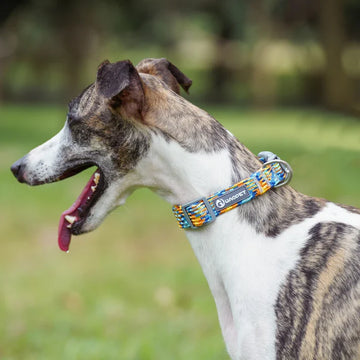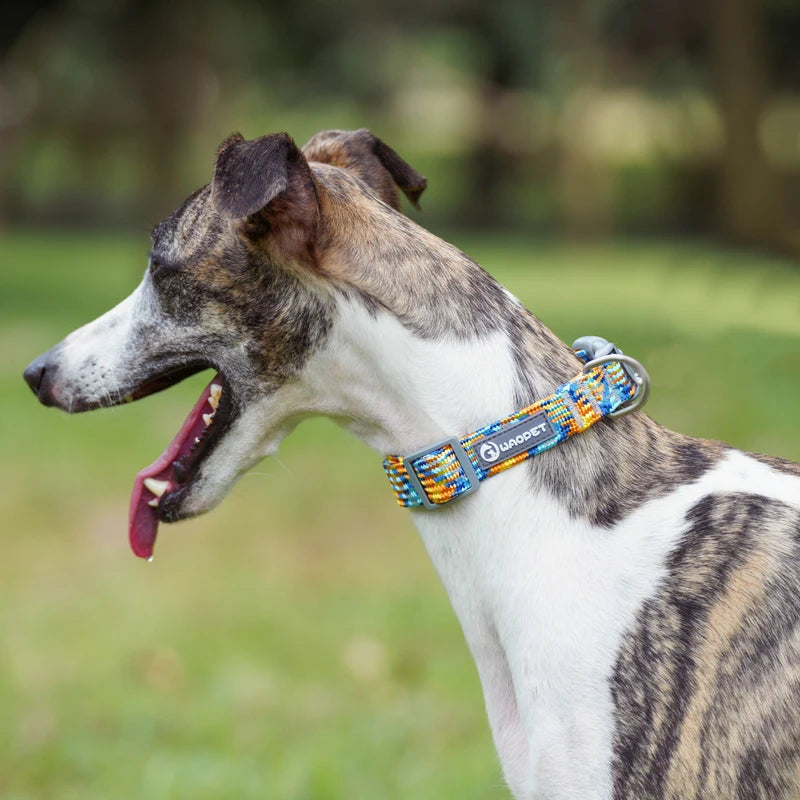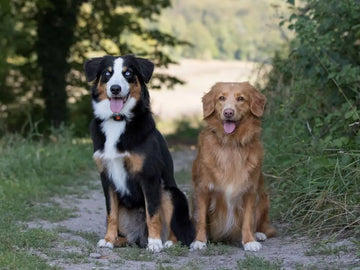Finding the right dog collar size is essential for your pet's comfort and safety. Whether you’re browsing pet supplies for the first time or just need a collar update, knowing how to measure correctly can make a big difference. Choosing the best puppy collars for young dogs requires particular attention to fit, as puppies grow quickly and need adjustable collars to stay comfortable.
Why Accurate Collar Measurement Matters
- Comfort: A collar that fits correctly allows the dog to move, breathe, and play without discomfort.
- Safety: A well-fitting collar prevents accidental escapes or injuries, especially if your dog is a strong puller.
- Identification: A collar with the right size can comfortably hold identification tags or other necessary information.
Tools Needed for Measuring a Dog Collar
- Flexible Measuring Tape: Ideally, a soft, flexible measuring tape works best.
- String or Ribbon: If you don’t have a measuring tape, a piece of string or ribbon can be used.
- Ruler: If using string, a ruler is helpful for taking the final measurement after marking the length.
Understanding the Types of Dog Collars
- Flat Collars: The standard everyday collar, often adjustable with a buckle.
- Martingale Collars: These provide a limited choke effect, ideal for dogs that tend to slip out of collars.
- Head Collars: These are designed for training and control, fitting around the dog’s head and muzzle.
- Choke and Prong Collars: Used primarily for training purposes, though their fit should be precise to avoid harm.
Steps to Measure for a Dog Collar
Step 1: Find the Right Spot on Your Dog’s Neck
- For most dogs, the best spot to measure is around the middle of the neck, just below where the collar will naturally sit.
- If your dog has a slender neck (like a Greyhound or Whippet), measure slightly lower to account for their slim, tapered neck shape.
Step 2: Wrap the Measuring Tape Around the Dog’s Neck
- Wrap the tape around the neck where the collar will sit comfortably, but not too high where it might slip off over the head.
- Make sure the tape is snug but not tight – you should be able to fit two fingers comfortably between the tape and the neck to ensure comfort.
Step 3: Check for the Two-Finger Rule
- The two-finger rule is a standard measurement approach in dog collar sizing. After wrapping the measuring tape, ensure you can slide two fingers between the tape and the dog’s neck without difficulty.
- For smaller dogs, use a slightly tighter fit, and for larger, stronger breeds, leave a bit more space.
Step 4: Measure Again for Accuracy
- After taking the first measurement, it’s a good idea to repeat the process to ensure accuracy.
- For dogs that may be uncooperative or squirmy, try measuring at a time when they’re calm.
Choosing the Right Collar Size Based on Measurement
- Most dog collars are adjustable and come with a recommended weight range. Use your measurement as a guide and check if the collar size falls within that range.

- Small Dogs: Usually measure around 10-15 inches.
- Medium Dogs: Generally 15-20 inches in neck circumference.
- Large Dogs: Typically 20 inches or larger.
Special Considerations by Breed
- Small Breeds: Breeds like Chihuahuas or Toy Poodles have delicate necks. Lightweight, narrow collars are best, so the measurement should be exact.
- Large or Giant Breeds: Breeds like Mastiffs and Great Danes require collars with sturdy, reinforced materials, and a bit more looseness to prevent chafing.
- Greyhounds and Sighthounds: With their narrow heads, Martingale collars are popular as they won’t easily slip off.
Adjusting the Collar for Growing Puppies
- If measuring for a puppy, consider the growth rate. Choose an adjustable collar that allows for growth without compromising safety.
- Measure often, as puppies can grow quickly, and adjust or replace the collar as needed.
Measuring for Martingale and Specialty Collars
- For Martingale collars, measure the widest part of your dog’s head, as well as the neck. Martingales tighten slightly, so this additional measurement ensures a comfortable, slip-free fit.
Common Mistakes to Avoid in Measuring
- Guessing: Each dog’s neck shape and size vary, so it’s essential to measure accurately.
- Ignoring the Collar Material: Some materials stretch, like leather, while others remain fixed, such as nylon.
- Too Tight or Too Loose: Ensure you follow the two-finger rule to prevent discomfort or accidental slipping.
Additional Tips for a Perfect Fit
- Seasonal Changes: Measure more frequently if your dog’s coat changes with seasons, as thicker fur in winter can affect the fit.
- Regular Check-ups: Even after initial measurement, check the collar fit periodically, especially if your dog gains or loses weight.
- Comfort and Safety First: The right fit is critical for your dog’s comfort and safety, so always prioritize those factors.
Conclusion
Choosing the right collar for your dog starts with an accurate measurement of the neck size. Following this guide, you can measure your dog’s neck with confidence, choose a collar that offers both comfort and security, and provide your pet with a safe, well-fitted accessory that serves its purpose effectively. Whether you have a puppy, an adult, or a senior dog, regular measuring and adjustment help keep your beloved pet comfortable, stylish, and secure.









